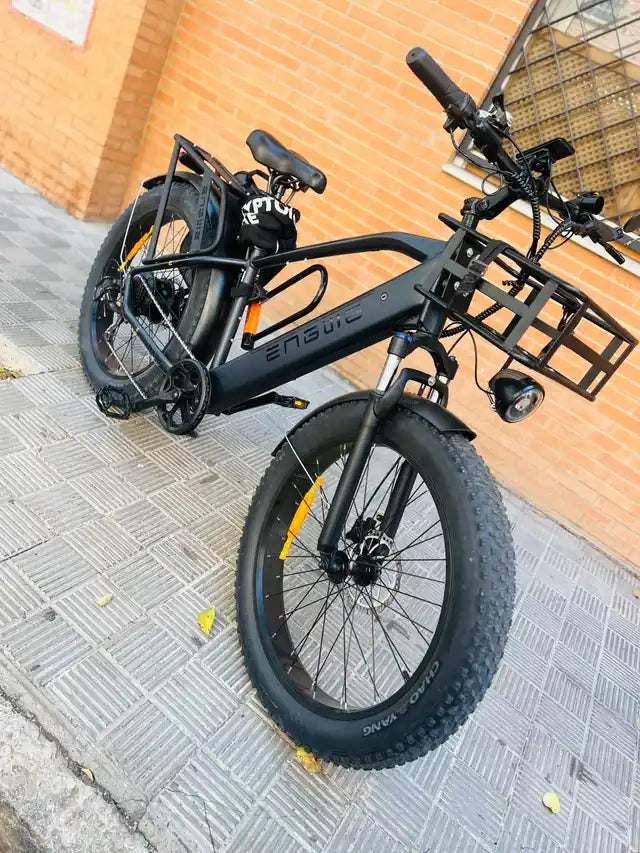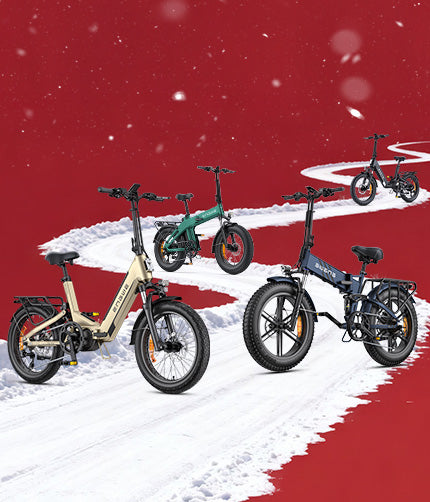Core Performance and Power Systems
This is the engine of your experience, so evaluate the core performance and power systems first. The motor and battery set the acceleration, hill-climbing capacity, and overall ride quality you can expect on your bike. Most riders only consider the maximum wattage in their power considerations, but when it comes to off-road riding, the torque is usually more important. This is one way you can get more power than you need and more specs than you should be worried about. Here are some essential considerations to ensure you get the power you truly need without overpaying for the specs you will not use.Motor Type
Hub motors are installed in the wheel’s hub and are well-known and cost-effective. Mid-drive motors are found in the bottom bracket and mount to the crank, providing more productive energy for climbing tall mountains because they capitalize on the bike’s gears, but hub motors are found on more expensive e-bikes.Motor Power
Measured in watts, this shows how strong the motor is. A 500W to 750W motor is a fantastic sweet spot for most trail riders. Peak watts are the maximum capacity for small bursts, while nominal watts are constant power.Torque
This is measured in Newton-meters (N.m), and it is the force that gets you started and drives you up hills. For dirt e-bike riding, you’ll want at least 50 N.m of torque for actual off-road driving.Throttle vs. Pedal Assist
E-bikes have throttles that allow you to move without pedaling. Pedal-assist systems allow the motor to help you when pedaling and have many degrees of assistance to pick from. Almost all e-bikes give you both for maximum flexibility.Build Quality and Key Features
Secondly, the durability and capacity for hard racetracks for an electric dirt bike are entirely determined by the quality of its build and features. The frame, suspension, and tires are the core aspects of your ride, and skimping here can ruin your adventure with harsh ride quality, rubbing components, or a dangerous connection to the ground. Robust structures not only maximize performance but also guarantee the durability of your investment. A frame is the most critical consideration, so always be cautious about these structural elements since they define the character and capabilities of your bike.Frame Material
Most frames are made from 6061 aluminum alloy, which provides a decent combination of weight, strength, and corrosion resistance. Steel is heavier but tough, while carbon fiber is significantly lighter and stronger but more costly.Suspension Systems
A front suspension is non-negotiable on a real dirt bike. A dual suspension with a rear shock and front fork provides maximum comfort and stability and can absorb impacts from both wheels. A hydraulic front shock has better damping than a straightforward spring fork.Fat Tires
The trademark characteristic of these bikes, averaging about 4.0 inches wide. Look for tires with a knobby, aggressive tread with a heavy-duty pattern for traction in dirt, sand, and mud. Multi-layer tires will have the flexibility required for anxiety-free trail riding.Brakes
The power to stop is as important as the power to go. Mechanical disc brakes are dependable and simple to maintain, but hydraulic disc brakes offer better brake modulation, require less hand force, and provide greater stopping power.
Battery and Range Logistics
The third aspect is understanding battery and range logistics to save your adventure from range anxiety and prevent it from ending too soon. Manufacturers usually advertise the maximum range, which can be achieved under favorable conditions on a flat surface with no obstacles. In practice, battery power consumption depends on the rider’s weight and style, the terrain complexity, and the assistance levels chosen. Here are the main battery characteristics:Battery Capacity & Voltage
Battery capacity is measured in Amp-hours (Ah) and Voltage (V). To calculate the total battery capacity in Watt-hours (Wh), multiply these parameters: V x Ah = Wh. A longer battery life equals a greater battery capacity (in Wh).Single vs. Dual Battery
You may choose one or two batteries installed on a bike to double the range and avoid short trips.Removable Battery
This is a convenience factor, allowing you to charge the battery indoors and minimize theft risk by leaving the most expensive part at home.Time for Full Charge
This varies from 5 to 8 hours, but you can always find this information in the specifications.Here is a table to know what the battery specifications mean to you:
| Metric | What it means | Why it matters |
|---|---|---|
| Voltage (V) | The electrical pressure or force. | Higher voltage can deliver power more efficiently: common e-bike systems are 36V, 48V, or 52V. |
| Amp-hours (Ah) | The battery’s capacity to store a charge. | A higher Ah rating means the battery can supply power for longer. |
| Watt-hours (Wh) | The total energy stored in the battery (V x Ah). | The most accurate metric for comparing potential range between electric bike models. |
An Exceptional Model: The ENGWE M20

The ENGWE M20’s major characteristics are:
A Benchmark Model
The ENGWE M20 may be viewed as a template for this sector.Tremendous Comfort
The dual suspension is designed to absorb considerable impact, making difficult paths moderate and comfortable.Impressive Range
The dual-battery system provides an outstanding range.All-Terrain Tires
The 20" x 4.0" triple-layer fat tires provide exceptional grip and stability on sand, dirt, and uneven surfaces.Reliable Power
A brushless motor with 55 Nm of torque ensures that you will have the essential power to start off or get up steep inclines.Fully-Featured
It comes with a Shimano 7-speed drivetrain, a 6061 aluminum alloy frame, dual disc brakes, and a visible LCD screen, making it a top-of-the-range machine ready for the most challenging conditions.
Practical Considerations
Finally, your decision must include practical considerations other than those mentioned, such as budget, maintenance, and local laws and regulations. A good purchase is not limited to the purchasing cost. Rather, it considers the total cost of ownership and ensures you are riding legally and having fun. Neglecting these factors may result in unforeseen expenses, or you may be unable to ride your new electric bike. Ultimately, the factors include:Setting a Budget
Determine your available budget, including essential gear such as a high-quality helmet, gloves, and a secure lock. Unless you have a specific reason, it is worth purchasing during the off-peak seasons or holiday sales as this can lead to massive savings.Long-Term Maintenance
Be aware of the cost of consumables – brake pads, chains, tires – and how long they last. Knowing maintenance costs helps extend the average useful life of your components.Battery Care
To extend battery life, never store it fully discharged or fully charged. Keep it at a partial charge of between 40% and 70% in a cool, dry location.Legal and Trail Access
Research e-bike classification and speed regulations in your area. For serious off-roading, torque and dual-suspension are the most important aspects. Torque gives the bike the power to climb, while the suspension keeps the rear wheel pushed against the trail for continuous traction.
Frequently Asked Questions
Is the bigger, more expensive battery always better?
Not always. You need to consider your realistic needs in terms of range and weigh the additional weight and cost of a bigger battery. A flexible dual-battery system that allows you to ride with one or two batteries is a great option.How can I test a bike to make sure it’s the perfect model to purchase?
Find a local dealer of the brand who may have a test bike or look for a demo day held by a brand of your choice nearby. A local MTB “demo day” event is the best place to test a few models on real terrain.Now you have all the knowledge you need to find the best fat tire electric dirt bike for your adventures.









